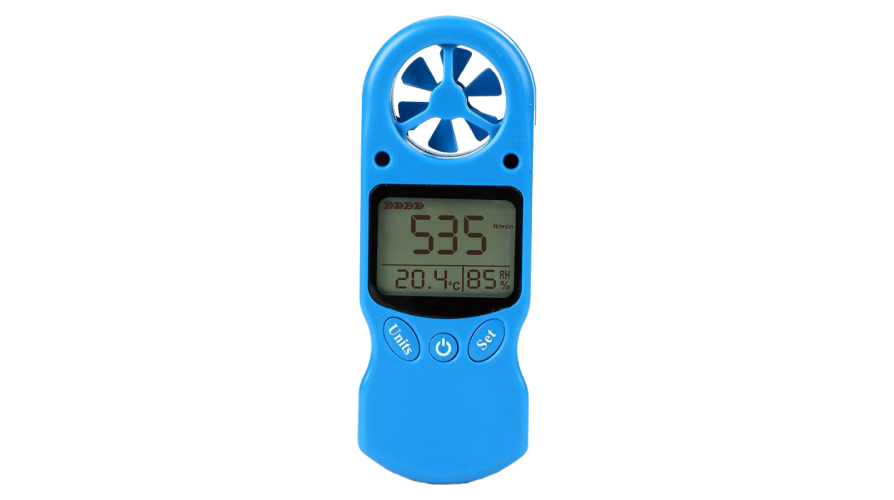Anemometers Unveiled: Understanding Their Significance in Ecological Monitoring and Safety Measures
The role of anemometers in environmental tracking and security procedures is often underestimated, yet their significance is undeniable. These instruments have a long background rooted in clinical query and technical advancements, evolving to come to be crucial devices in numerous areas. From weather forecasting to air travel security, anemometers play an essential function in supplying accurate information that educates decision-making processes and boosts general safety and security. Recognizing the ins and outs of anemometers reveals a globe of crucial understandings that are essential to our understanding of the environment and the measures we require to make certain safety and security.
History of Anemometers
The advancement of anemometers can be traced back to the old civilizations where rudimentary wind determining devices were very first made use of. These very early wind measurement devices laid the structure for the advancement of extra advanced anemometers in time. One of the earliest recognized anemometers was the hemispherical mug anemometer created by Leon Battista Alberti in the 15th century. This design consisted of four hemispherical cups that accumulated wind energy, giving a measurement of its strength based upon the speed of rotation.
Over the years, developments in technology led to the development of more modern-day anemometers, consisting of ultrasonic anemometers and laser Doppler anemometers, offering increased accuracy and performance in gauging wind speed and direction. The history of anemometers showcases an amazing journey of technology and development in the area of meteorology.
Kinds Of Anemometers
Throughout the field of weather forecasting, different sorts of anemometers have been developed to properly gauge wind speed and instructions. The most common kind is the mug anemometer, which contains three or four mugs installed on horizontal arms that revolve with the wind. As the cups rotate, the rate at which they rotate is straight proportional to the wind rate. An additional commonly used kind is the vane anemometer, which features a tail or fin that aligns itself with the wind direction. This placement enables the gadget to determine the wind instructions. Sonic anemometers utilize ultrasonic signals to measure wind rate and direction properly. They are typically used in study applications due to their high precision. Hot-wire anemometers operate based upon the principle that the cooling effect of wind on a warmed wire is proportional to the wind rate. These anemometers are appropriate for measuring reduced wind speeds with high accuracy. Each kind of anemometer has its staminas and is picked based on the particular needs of the tracking job available.
Applications in Weather Forecasting
Having actually gone over the numerous kinds of anemometers utilized in meteorology for determining wind rate and instructions, it is important to discover their practical applications in the field. Anemometers play a critical role in meteorology by offering real-time and accurate data on wind problems (anemometer). Meteorologists make use of anemometers to keep an eye on wind rate and instructions to anticipate weather patterns, issue warnings for severe weather events like hurricanes, tornados, and cyclones, and assess climatic problems for aviation safety
In meteorology, anemometers help in understanding neighborhood and regional wind patterns, which are important for forecasting climate modifications and determining weather fads. These gadgets are likewise used in research to research microclimates, metropolitan heat islands, and air pollution diffusion. Furthermore, anemometers are employed in farming to enhance crop management techniques, such as irrigation and pesticide application, based upon wind problems.
Importance in Aeronautics Security
An essential facet of making sure aviation safety and security hinges on the thorough tracking of wind conditions making use of anemometers. Anemometers play a crucial role in aeronautics by providing real-time data on wind rate and instructions, aiding pilots in making notified decisions during liftoff, flight, and touchdown. Unpredictable and strong winds can significantly affect airplane operations, making it crucial for aeronautics authorities to depend on precise wind dimensions to guarantee the safety of guests and staff.

In the dynamic atmosphere of air travel, where even minor modifications in wind rate and direction can have extensive results, anemometers stand as indispensable devices for advertising secure and risk-free flight.
Duty in Environmental Research
Anemometers play a vital duty in ecological research by giving vital data on wind speed and direction. By accurately determining wind attributes, anemometers assist scientists examine the motion of toxins in the air, analyze the impact of commercial discharges, and anticipate the spread of pollutants in the environment.


Final Thought
In final thought, anemometers have played a vital function in ecological monitoring and precaution. With a rich history and various types readily available, these tools have actually been commonly utilized in meteorology, aviation safety and security, and environmental research study. Comprehending the importance of anemometers is vital for accurately measuring wind rate and direction, which is important for predicting climate patterns, making certain secure air travel operations, and performing ecological studies - anemometer. Their payments to these areas can not be ignored.
One of the earliest recognized anemometers was the hemispherical cup anemometer designed by Leon Battista Alberti in the 15th century. Over the years, improvements in technology led to the advancement of more contemporary anemometers, including ultrasonic anemometers and laser Doppler anemometers, providing increased precision and performance in determining wind speed and instructions. Hot-wire anemometers operate based on the principle that the cooling result of wind on a heated cord is proportional to the wind rate. Meteorologists make use of anemometers to keep an eye on wind rate and direction to anticipate weather patterns, problem cautions for severe weather condition occasions like typhoons, hurricanes, and storms, and examine climatic problems for aviation security.
Comprehending the relevance of anemometers is necessary for properly gauging wind speed and direction, which is important for anticipating climate patterns, ensuring their website safe air travel procedures, and performing ecological researches. (anemometer)